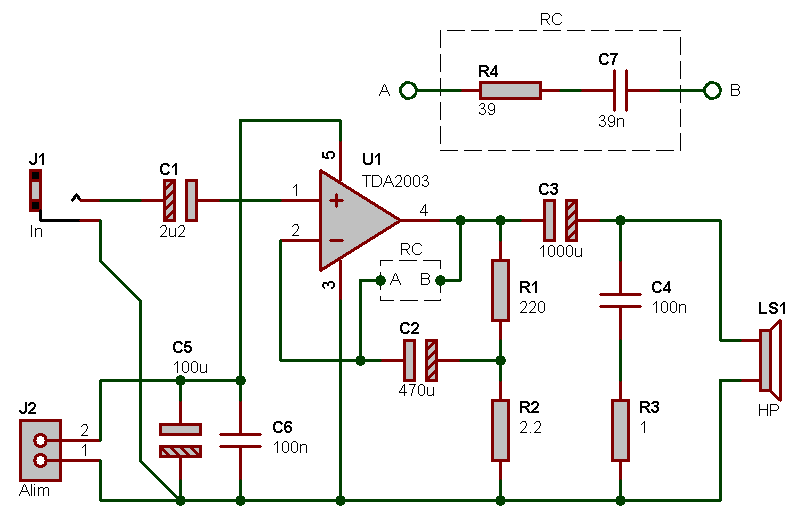When I first thought about this, I wanted something that would be cheap and fun to build. I came up with a LM386-based speaker, giving a good balance between weight and power. Using a shoebox as enclosure, the whole thing weighted under 500g, battery and speaker included, for less than 20€ ($25-28).
It was loud enough to use it indoors, but less effective outdoors. The sound quality wasn't perfect, but good enough to be "listenable". All of this was built last year...
 |
| First version... The case? A simple cardboard, wooden box, with lots of hot glue. The holes were "drilled" without any alignment... |
 |
| Back of the "box"... A small perfboard holds the two LM386, half a watt each. Everything is powered by a 9V battery |
In
February, I thought about building something a stronger than cardboard, with a bit more power to give, while keeping it portable.
First concern: what would I use as amplifier? I wanted to keep the circuit as simple as possible. Searching through Internet revealed the TDA2003 as the best alternative... It has 10W of power, and doesn't need a symmetrical power supply, thus making it eligible for portable applications.
 |
| The schematic used. Source: http://www.sonelec-musique.com/electronique_realisations_ampli_bf_001.html |
|
The schematic is pretty simple, It's nearly the same as the one you can find on the datasheet... I reproduced the circuit twice for stereo.
As power supply, a simple 12V 3Ah SLA battery was used. The speakers came from a car radio.
In the first version, the iPod was plugged in the headphones jack, with an annoyingly long cable. For this one, I wanted something clean. I bought a cheap iPod type connector to line out+USB cable off eBay for 4 bucks, and cut the jack to solder it directly to the amp. I kept a 3.5mm jack as alternate input, to plug in other devices.
 |
| Here is the Heavy-duty, more recent version... Still a simple box. I used a safety switch from RadioShack, thought it would look cool :) |
 |
| Back of the device. I know, I have to tidy my wires up. The battery is hiding the circuit. In the upper part, you can see the "dock" cable. |
 |
| Details of the amp. Simple, but powerful circuit. I added two heatsinks, but they never get very hot. |
As for the case, I didn't want anything fancy... Remember: Keep it Simple. That's why I stuck to a simple wooden box. I never tried at full power yet, but at half throttle, it's already loud enough to be heard quite a distance away. Normally, the battery lasts for at least 3hrs, at medium power, without charging. It also includes an external power plug, that way I can use it when the battery goes flat (as for the charging, I'm using an external charger... I have to figure out something more portable). Still not audiophile quality, but it's already pretty good, I can't hear any distortion.
The dock also has a charging feature (By sending 5v in the USB power line, along with 2.5V in the D+ and D- to trick the iPod into thinking it's plugged into an official product), but for the sake of autonomy, I added a switch to turn it off when not needed. I still have to fix a problem with the 5V regulator, it gets VERY hot, even with a heatsink, which is weird as the 7805 is rated at 1A, and the iPod Classic charges at 500 mA.
The only drawback I can think about is the weight: 3.5kgs! 7 times more than the first version... I had to lose a bit of portability for the benefit of power.
Total cost? 25€ (or $30)














